Bio
Hermann Stefánsson was born in Reykjavík on July 25th 1968. In 1994 he graduated with a B.A. degree in comparative literature and Icelandic from The University of Iceland, and in 2001 he received a master's degree in comparative literature from the same university. Hermann finished parts of his studies in Spain, as he has lived there and in Galicia on and off for years.
Hermann has worked as a freelance academic and translator with the ReykjavíkAcademy, an editor for the webzine Kistan and a critic for Morgunblaðið daily newspaper, as well as writing numerous columns and articles for Lesbókin (Morgunblaðið's weekly cultural supplement), The National Radio and Kistan. He has also written scholarly articles and short stories for various publications, been a part-time teacher at The University of Iceland and a copy editor for the publishers Hávallaútgáfan and Bjartur. Hermann is also a musician, having written songs and lyrics on records released by himself, his band 5ta herdeildin and with his brother Jón Hallur Stefánsson.
Hermann's first book, Sjónhverfingar (Illusions), was published by Bjartur in 2003 and described as a poetic non-fiction work. A year later his short story collection Níu þjófalyklar (Nine Thief's Keys) was published. Hermann has since then written novels, short stories, books of poetry, a short memoir and a few radio plays. Hermann has translated the works of foreign authors such as Juan José Millás, Manuel Rivas, José Carlos Somoza and Zizou Corder into Icelandic, and has also translated Icelandic poems into Galician, which were published in the collection Auroras Boreais. Escolma de poesía Islandesa.
About the Author
Imitation and Theft
In the foreword to his first book Illusions: Alibis for an Icelandic Reality (2003), which includes various articles on literature and other scholarly subjects, Hermann Stefánsson explains: “This book looks at absence from various perspectives. These absences fall into three categories: the absence of a final conclusion, the absence of reality and the absence of absolute truth” (p. 8). The same might be said about Hermann’s fiction, where absence, meaning, reality and truth are constantly being explored from different perspectives and in relation to one another. All of Hermann’s writing to some extent contemplates its own meaning—exploring the relationship between literature and reality and the interconnectivity of literature and writing as a whole. Along with using photography and other forms of trickery, it seems as if his work uses these contemplations to endear itself to the reader and make amends for its lack of realism, conclusive meaning and absolute truth.
Hermann’s first novel, Nine Thief Keys, was published in 2004. The reader might initially assume that the book is a short story collection, but it gradually becomes apparent that all the stories are interconnected. In fact, the book might be said to be a novel in disguise. As the title might suggest, there is an exploration of the effects of influence, reference and plagiarism threaded throughout the book. We observe a writer named Guðjón in his attempts at writing and then see how his wife, Helena, responds to his writing. These two characters can also be found in some of Hermann’s later novels. The text is haunted by several authors who persecute Guðjón by inserting themselves into the book he is writing, so that it seems as if while writing he is being overpowered by the writing of other writers; e.g. Ólafur Jóhann Ólafsson (whose work the book’s title alludes to) and Davíð Oddsson, as well as various international authors such as Franz Kafka and Enid Blyton. Helena acts as the critical reader who asks questions and is greatly concerned with all the ghosts that the prose seems to be haunted by. Nine Thief Keys carries the earmarks of metafiction; i.e. a self-referential text. You might say that one symptom of such writing is that it undermines the role of the critic, in that it is constantly interrogating itself and even provides us with “keys” to the text—which in this case are thief keys. The reader is immersed in a strange landscape of literature, writers and reference, where nothing can be trusted and there is no apparent means of escape. Here, the reader is told that they are observing the book’s author as the text is being written. Of course, this is an illusion, and the connection to the outside world is a fantasy. Guðjón is not the book’s author, and the book’s author is not Guðjón.
In the penultimate story in the collection, “The Shadow and the Coincidence”, Ólafur Jóhann has not only invaded Guðjón’s prose but also inserted himself into Guðjón’s life. In fact, he is now married to Helena. She and Ólafur walk through the Spanish city of Santiago de Compostela and talk about literature, coincidences, visions and perception. Helena says: “Illusions are actually playing around with visibility—something that supposedly can’t happen happens, something appears to disappear when in fact it may have never existed in the first place” (99). This echoes the reader’s experience. While the two of them are standing there talking, they observe a strange shadow which is thrown against the cathedral. Ólafur Jóhann tries to photograph the shadow, and in fact the story is accompanied by a photograph depicting what might very well be that same shadow. Yet again, the reader must pass through various realms of reality and fiction. In the realm where the writer Guðjón is busy writing his stories, Helena admonishes him for marrying her off to Ólafur and tells him that he has to get past his obsession with Ólafur Jóhann. In the final story in the collection, Guðjón finally pays Ólafur Jóhann a visit. The story ends with Ólafur Jóhann’s death, which might be read as a literary recreation of Harold Bloom’s idea of the “anxiety of influence”, which claims that every “big” author has to “murder” their major influencer—i.e. the “big” author that stands in their way.
In an essay about Roland Barthes found in the aforementioned essay collection Illusions, Hermann says: “As a system based on symbols, traffic is a good example of ‘culture fiction’. Indicators, traffic regulations, traffic signs and traffic lights: these are all symbols that we read every day. But as opposed to the multiple layers of meaning found in other culture fictions, these symbols are set in stone and claim that they have a direct and natural connection to their stipulated meaning. A stop sign simply means that you should stop. It offers no other option, no room for interpretation; the symbol itself is immobile” (27). This idea is explored further in Hermann’s second novel, Indicator (2005), where the symbol doesn’t just move but takes off at a great pace. The book starts with the following conversation between Guðjón and Helena, who again take their place as the main protagonists. Here, in an exchange which is worth presenting in its entirety, they take part in a kind of “fore-dialogue” which is presented before the actual opening of the novel.
Her: “Put out an indicator.”
Me: “What?”
Her: “I said: put out an indicator, people can’t read your thoughts when you’re in traffic, they don’t know where you’re going ...”
Me: “I ... I am putting on the indicator; now I’m making the turn, now I’m putting on the indicator.”
Her: “It’s too late now, you should have put out an indicator earlier, before you made the turn. The whole point of indicators is to inform other drivers of what you’re going to do, they can see for themselves what you’re actually doing.”
Me: “You mean that they’re a kind of soothsayer ...?”
Her: “No, of course not. They are an announcement of intent. People use indicators to say what they’re going to do.”
Me: “Hold on. You don’t put out an indicator. You don’t say that you’re putting out an indicator. You put out a book, not an indicator.”
Her: “But you are putting the indicator out, it extends outwards from the car, out in one direction or another. I’m going to keep putting out indicators.”
Me: “That’s just plain wrong.”
Her: “Putting out indicators? Nonono! They prevent accidents!”
Me: “Come on, since when do solecisms prevent accidents? To solve the matter once and for all, I think I’ll put out a book that I’ll call ‘Indicator’. Then, whenever you tell me to put out an indicator, I’ll say that I’ve already put out an indicator. I´ll say that my indicators received rave reviews.
Her: “I don’t think your indicators would receive any rave reviews in traffic, when and if you finally put them out.”
Me: “When I turn them on, you mean ...? But books also tell people where you’re going ...”
Her: “No, of course they don’t. What kind of nonsense would that be, if books just contained the author’s announcement of where he is going? Put out an indicator. Just let me out here on the corner.”
They’re back, and again they immediately start locking horns over meaning and purpose. The traffic signs, which were previously said to be such stable symbols, turn out to be not so stable at all. The meaning of the indicator is not just infinite and undetermined, the phrasing around it can also affect its meaning: An indicator light can turn into a novel; presumably the one we are holding, although this may be disputed as the author of that novel isn’t named Guðjón... and so on.
Guðjón is sitting in his study when he receives a phone call from his sister that initiates the plot (if you can call it a plot). She tells him that she suspects that her husband and Guðjón’s wife are having an affair. As in Nine Thief Keys, the prose touches on various other texts, authors and books. It repeatedly explores the realms of Kafka’s The Castle, which is perhaps not surprising as Guðjón travels to the Czech Republic for a writers’ conference. A Portuguese self-help book about masturbation also repeatedly interrupts Guðjón, and his suspicion regarding Helena’s betrayal taints all his words and actions. As Ingi Björn Guðnason points out in his review of the book on bokmenntir.is: “You might describe the novel Indicator in the terms used by Hermann in his “Dictionary of Dominating Opinions”, which first appeared in Illusions; i.e. “one might say that” the story is “multifaceted” and “slips away from narrow definitions”. The novel constantly changes perspectives; from Guðjón’s first person narration to the narrator’s third person retelling—in which Guðjón is the main character. From there it switches to Helena’s first-person narration and then to a third person retelling that appears to take place in Guðjón’s mind and in which Helena and Jósef are the main characters. Finally, there is a third person narration which consists of a book within the book. Thus, the reader has to keep their attention rapt in order to follow which perspective is being used and who is actually doing the speaking at which time. The story also contains “independent” pieces. First and foremost of these pieces is the novel that Guðjón is writing, but they also include a sermon by Father Pétur (Lína’s ex-husband), a news report written by Jósef and/or Guðjón, and a foreword to a collection of articles written by Jósef.” As this description shows, the book’s structure is quite complex, but even so readers are successfully escorted along these slippery trails so that they can take delight in the author’s trickery and misdirection—much like an audience watching a skilful magician apply his trade.
It is commonly said that photography has a special relationship with reality. The vision of the world that we see in photographs somehow appears more genuine than the world as it is depicted in other artforms. Even the advent of photoshop and other image falsifications has done little to dissuade this idea. As the narrator of Indicator points out, fictional characters almost never appear in photographs—except for rare exceptions such as in the works of Michael Ondaatje and W.G. Sebald (see my article on this subject in issue 3:2004 of Ritið). In an article about Jean Baudrillard found in Illusions, Hermann says: “Isn’t there a great hunger for reality in our current climate?” (p. 30) You might say that in his books Hermann tries to sate that hunger through the use of photography. We have already mentioned the photograph in Nine Thief Keys. Indicator includes a picture of the happy couple itself, Guðjón and Helena, which is addressed thusly in the text: “The photograph of Guðjón and Helena on the next page might bear the caption: “Guðjón and Helena at a happier time” [...] This caption would indicate that some great unfortune has befallen one or both of them. In fact, it would indicate that the picture does not show the actual subject that the article claims to cover, but its very opposite. The absence of this misfortune in the photograph is a key factor” (p. 28). The photograph shows a man and a woman who are sitting at a table. The woman appears to be wearing a crown made of balloons. They look happy, no sign of misfortune anywhere, perhaps not surprisingly as the actual presence of any such misfortune is entirely unclear. It seems fitting to reiterate Helena’s words in Nine Thief Keys: “Illusions are actually playing around with visibility—something that supposedly can’t happen happens, something appears to disappear when in fact it may have never existed in the first place” (99). Here, the photograph acts as a kind of illusion—the appearance of a non-existent external reality—even though the people in the photograph do in fact exist and might well be Guðjón and Helena.
Photography again plays an important role in the poetry collection A City in Fog (2006). The collection weaves together poetry and photography. The photographs are drab, almost foggy, and perfectly reflect the writing. Guðjón and Helena are nowhere to be found, although the foreword specifies the following: “This book is written—by someone who isn’t me—during walks around the city of Santiago de Compostela in Galicia in North-West Spain. The city is made of stone. It is often foggy there and the city is sometimes called The Capital of Rain.” Thus, the city is an ideal backdrop and/or inspiration for a book of poetry; i.e. it offers plenty of clichés ready at hand, as the author immediately points out in the first poem, which concludes with these encouraging words aimed at all writers:
the tongue’s main rhyme words are:
rain, lonelinesspoets, use them, now’s your chance.
One of Hermann Stefánsson’s ongoing subjects, fiction vs. reality, is given an added dimension in the poem “Like a mother comforts a child”, which says:
I stand in the corner between the balcony door and the desk
I probably wrote myself there
I’m barely there, really.
Almost every page contains photographs: pictures of rainy streets, churches, narrow alleyways, gargoyles (dripping with foreign rain) and windows. Also, the shadow from Nine Thief Keys makes another appearance. You might say that the images surround the poetry, rather than frame it. They oftentimes spill over onto other pages. Thus, images and words become conjoined, creating an intercontextuality that adds to their meaning—as can be seen in the poem “Boy on a Bird”, where the final line reads: “he followed me down Ruel Street” and is accompanied by an image that shows a narrow alley which naturally draws the eye along its cobbles to its endpoint. Only two of the photographs contain people: pedestrians walking down the street in one picture and onlookers framed in a window in another. The rest of them are totally vacant. Still, the poetry itself contain lots of people. The poems’ speaker meets Maria, waiters, a shop girl, her friends etc. The collection is a travel log; the speaker is a foreigner, a stranger, an outcast. However, the poetry rarely descends to a tourist’s clichéd self-reflection, as is made clear in the final lines of the poem “Urban Error”: “No one can find himself in a city like this”. The point is restated later in the poem: “this is a city to get lost in / not find yourself”. The image that accompanies the poem shows a front door, windowless and shut, with a door frame made of stone that offers the lettering Archivo—or “museum”. The speaker says:
I saw myself passing by
as I would be
if I had been alive in another time
I followed myself
until I came to a large building
made from stacked stones
there I disappeared inside like I was on my way to a secret rendezvousthis is a city for losing yourself
not finding yourself
I let sleeping dogs lie and kept walking
So, there is the possibility that the museum contains another version of the speaker. However, he keeps walking and doesn’t open that door. The reader is left on tender hooks, waiting to hear more and see more photographs from other walks.
In a similar way, Hermann’s next novel presents various worlds that might contain other versions of yourself. Euphoria (2008) is the third book about Guðjón and Helena. The cover claims that the book is a “concept thriller”—which might be read in a number of ways. It is of course an accurate term in that the book’s subjects are “thrilling” concepts—as quantum mechanics (e.g. string theory, wormholes, black holes etc.) might be called by a layman. As with any other thriller, the reader desperately wants to find out what has happened, but this is somewhat challenging. Again, the prose plays around with the reader’s expectations and the relationship between fiction and reality. No wonder, as it seems as if Guðjón is losing touch with his own reality.
“Concept thriller” could also be read as another term for science-fiction—a genre which shares some key features with Euphoria. Science-fiction is often based on concepts that seem valid within the realms of science but come across as utter fiction anywhere else. The book presents time-travel and mad scientists and many other familiar features of the genre. Furthermore, the book evokes themes from films such as Memento, Being John Malkovich and other works that revolve around forgetting and the loss of a mind.
Writer Guðjón Ólafsson awakes with his words in a jumble. His memory is gone along with his grasp of language. With uncertain results, he tries to put the pieces of his past and his consciousness back together. He has suffered an accident, or perhaps even an attack. His father tries to help him. His girlfriend gives up on him but then suffers the same loss as he. The two then have to fight back against shady characters, doctors and mad scientists. The forgetful are doomed to forever roam through their own consciousnesses, which means that they have a very strange relationship to their own past. The mad scientist then tries to use their roaming minds for his own benefits.
As I mentioned previously, the interplay of fiction and reality is a recurrent theme in Hermann’s books about Guðjón and Helena. Here, however, this interplay takes place within the characters’ minds. This makes it unclear which elements are a part of the characters’ reality and which are imagination, fiction, lies, forgetfulness. This leaves the reader in the strange position of needing to understand what has actually happened to the characters “in real life”—which is of course nothing more than a figment of the author’s imagination. The result is a never-ending house of mirrors that the reader must dive into.
Memory loss is a fascinating subject. So much of the self is bound up with memory; i.e. the story we tell about ourselves. Forgetfulness results in an infinite uncertainty of who you are and who everyone else is. Any solutions or answers will be mere guesswork. The story places this forgetfulness and loss of consciousness in the context of quantum mechanics. This results in an entertaining exploration of time-travel, fiction, imagination, brain-damage and the many strange crooks and crannies of quantum mechanics.
In fiction, the absence of absolute meaning doesn’t necessarily have to be the same as a lack of meaning. Rather, the result is a resource for a great variety of interpretations. Hermann Stefánsson is conscious of the fact that in order to create new ideas, traditional means of storytelling must be subverted. In his work, readers are fooled again and again, drifting between fiction and reality as well as fictional reality. But after all, that is the whole point.
© Gunnþórunn Guðmundsdóttir, june 2009.
Translated by Björn Halldórsson, november 2019
Awards
Nominations
2015 - The Icelandic Literature Prize: Leiðin út í heim (Into the World)
2014 - The Icelandic Translators’ Award: Uppfinning Morels (La invención de Morel)
2012 - The Icelandic Translators’ Award: Fásinna (Insensatez)
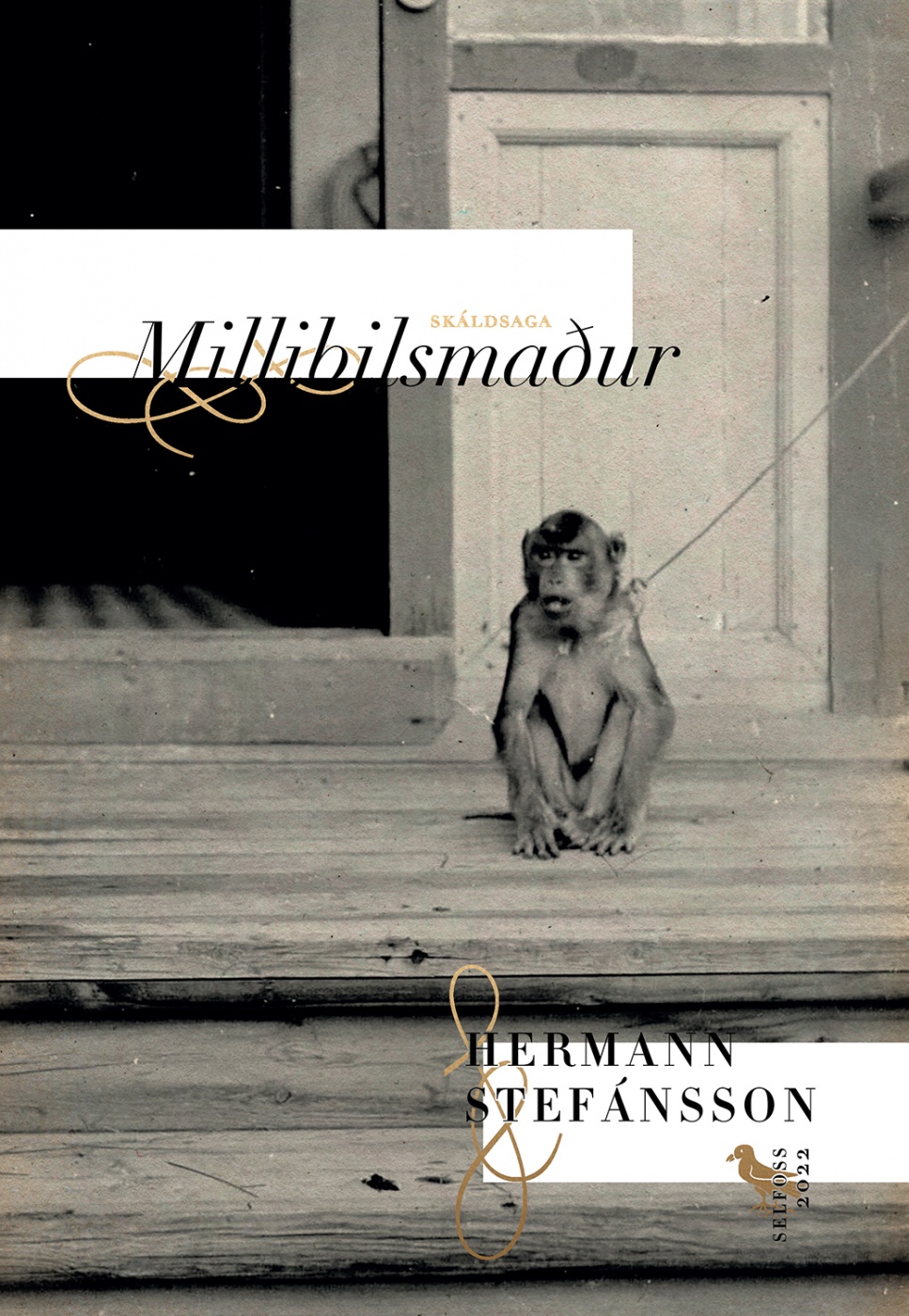
Millibilsmaður (The Intermediate)
Read moreÍ Reykjavík geisar mikið fár yfir hinni nýju stefnu, spíritismanum.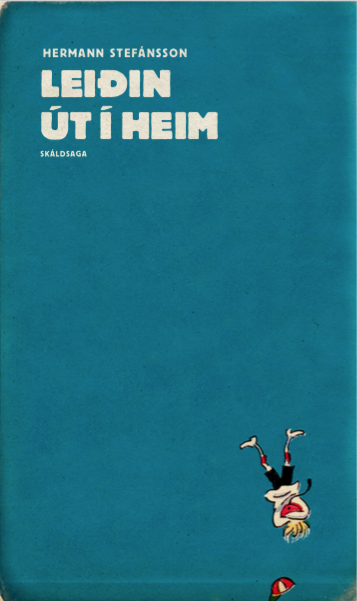
Leiðin út í heim (The Way Into the World)
Read more
Spennustöðin: stílabók
Read more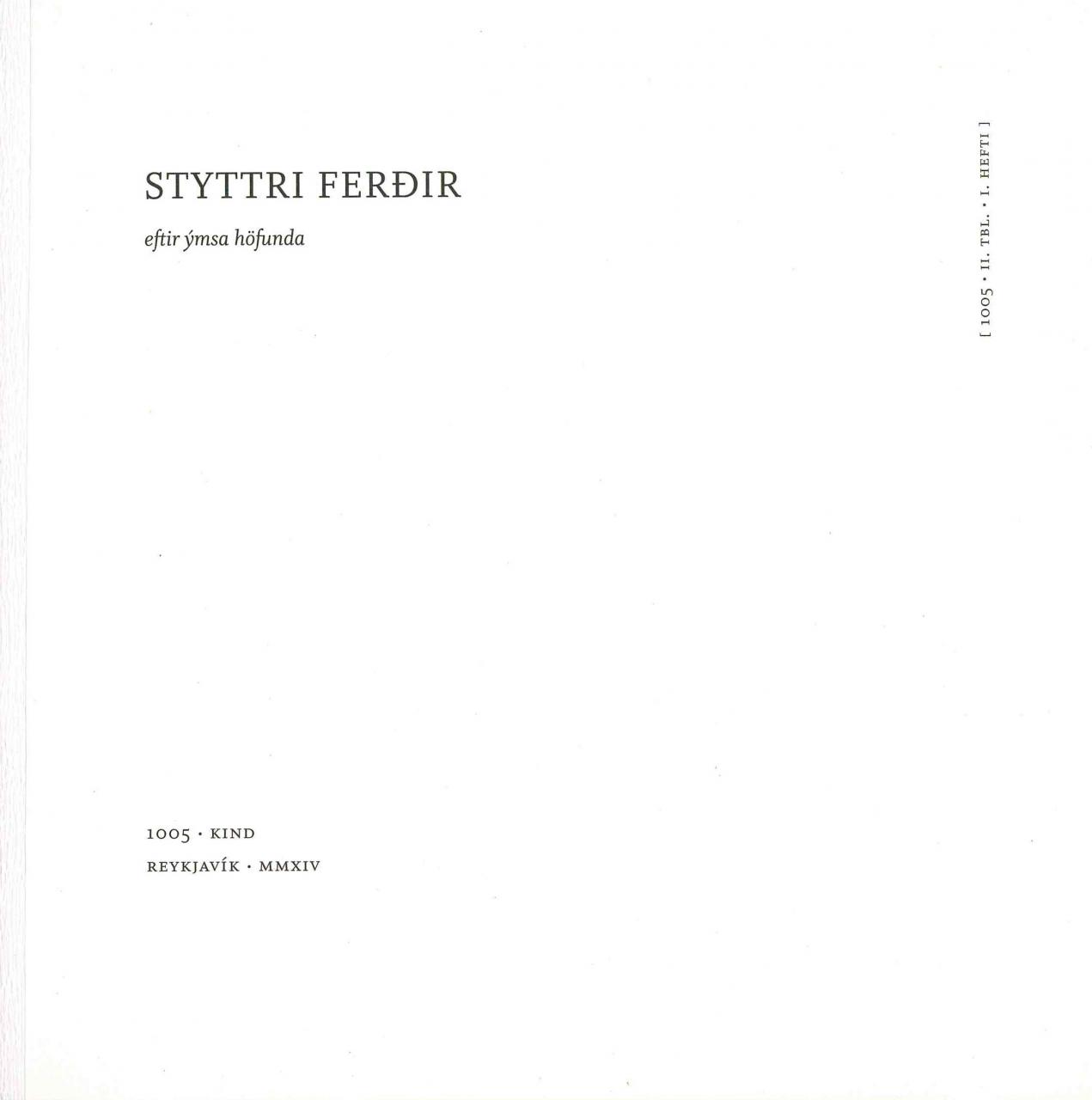
Ungbarnasund á Hrafnistu (Infant Swimming in Hrafnista)
Read more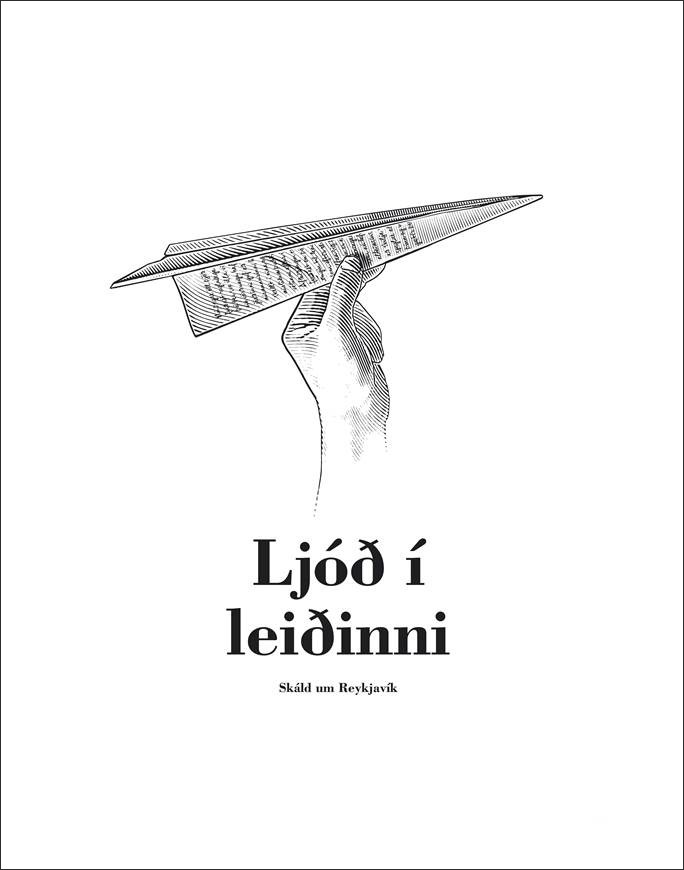
Ljóð í leiðinni: skáld um Reykjavík (Poetry to Go: Poets on Reykjavík)
Read more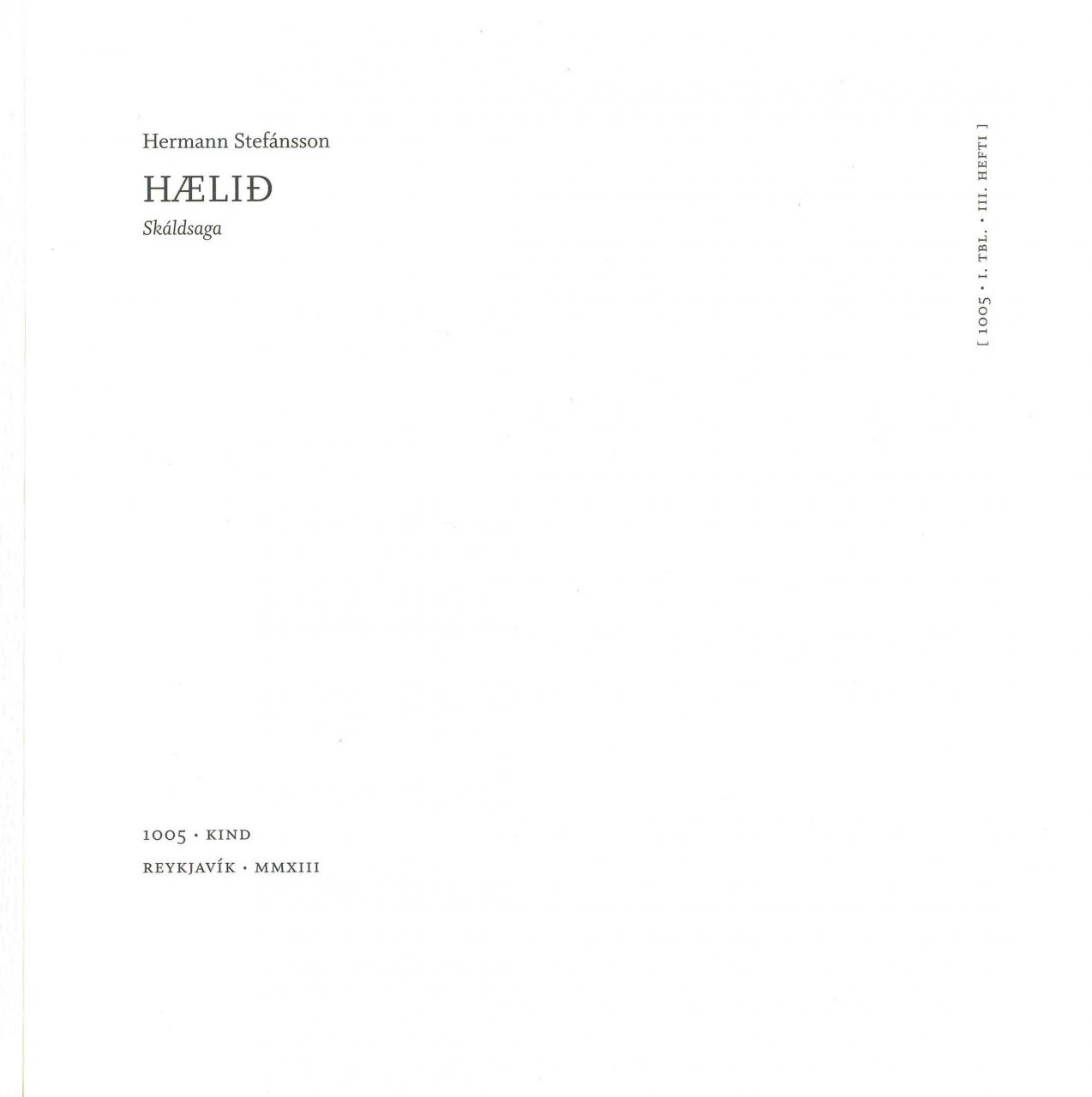
Hælið (The Sanitarium)
Read more
Ugluturn (Owl´s Tower)
Read more
Zeitreise als Laborratte
Read moreSmásaga í Nachtlandschaften
Read more
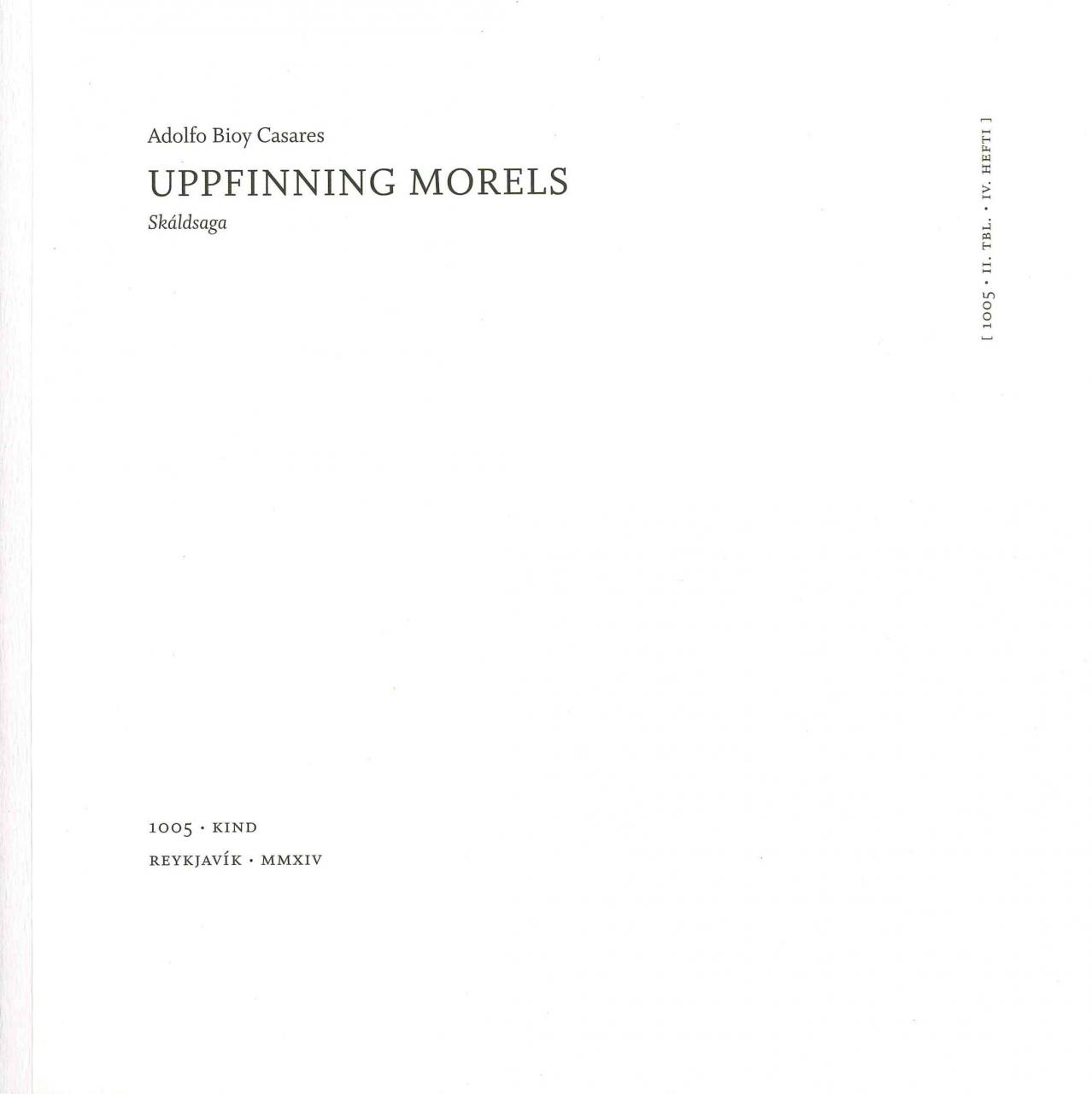
Uppfinning Morels (The Invention of Morel)
Read more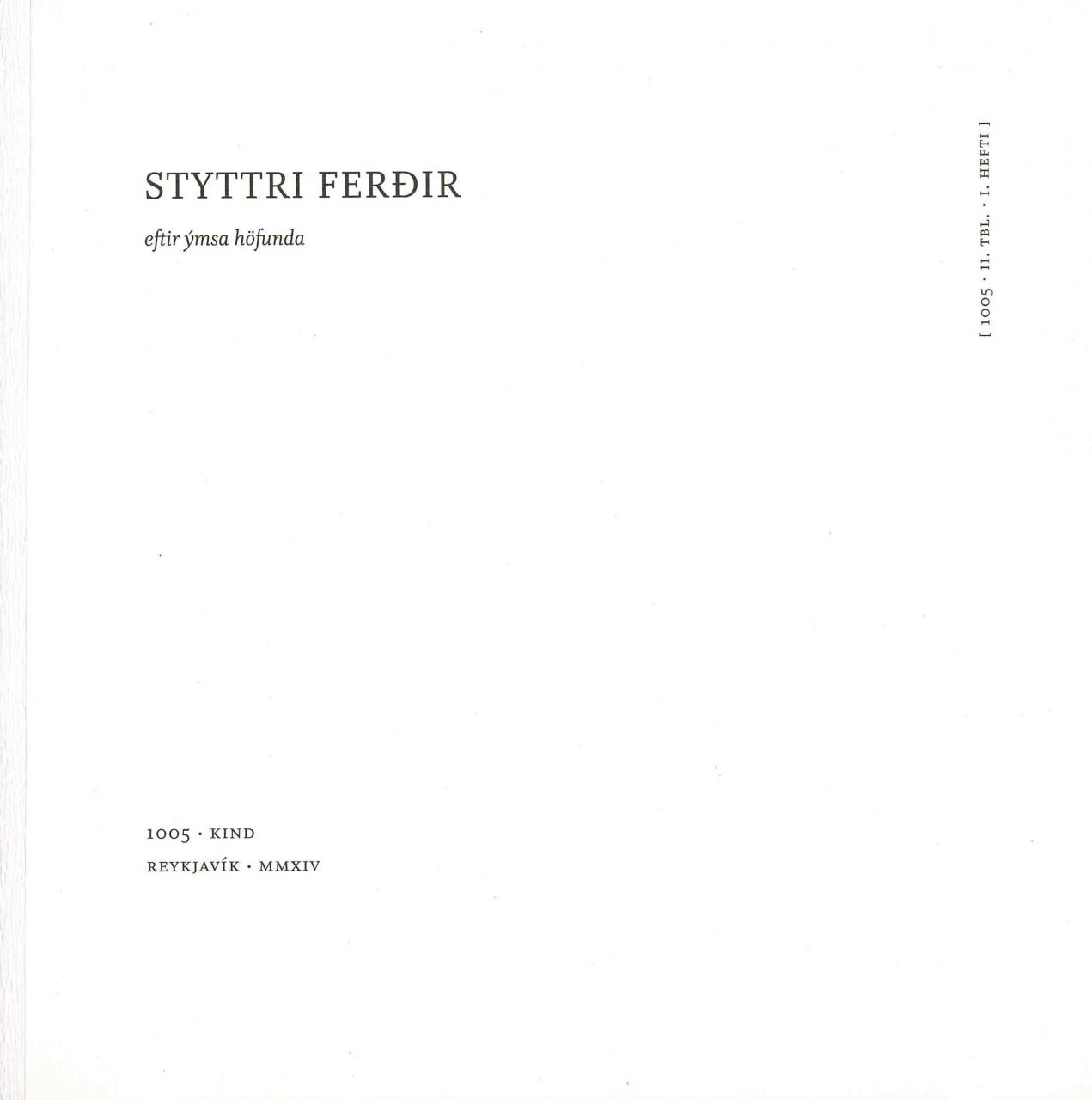
Leiðbeiningar um hvernig ganga skal upp stiga (Instructions on How to Climb a Staircase)
Read more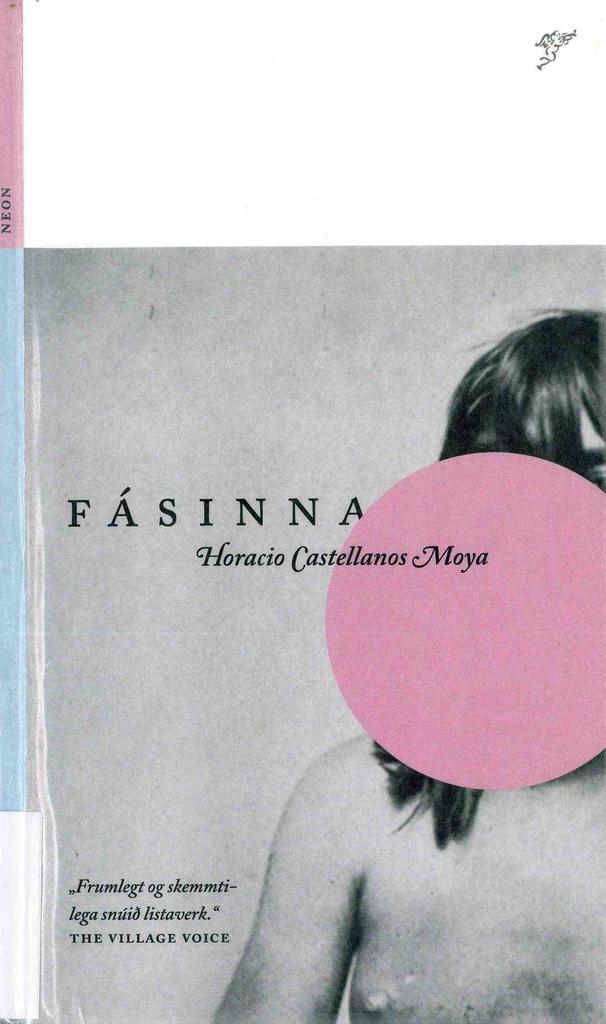
Fásinna
Read more
Laura og Julio
Read moreÖrsögur eftir Julio Cortázar
Read more
Ósýnilegir glæpir (Invisible Crimes)
Read more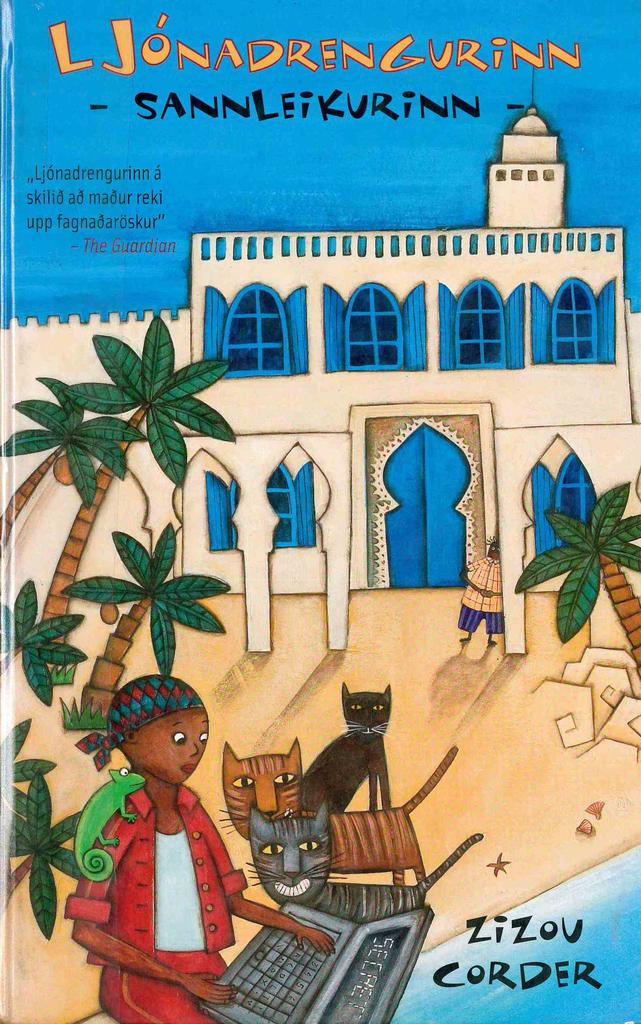
Ljónadrengurinn: Sannleikurinn (Lion Boy: The Truth)
Read more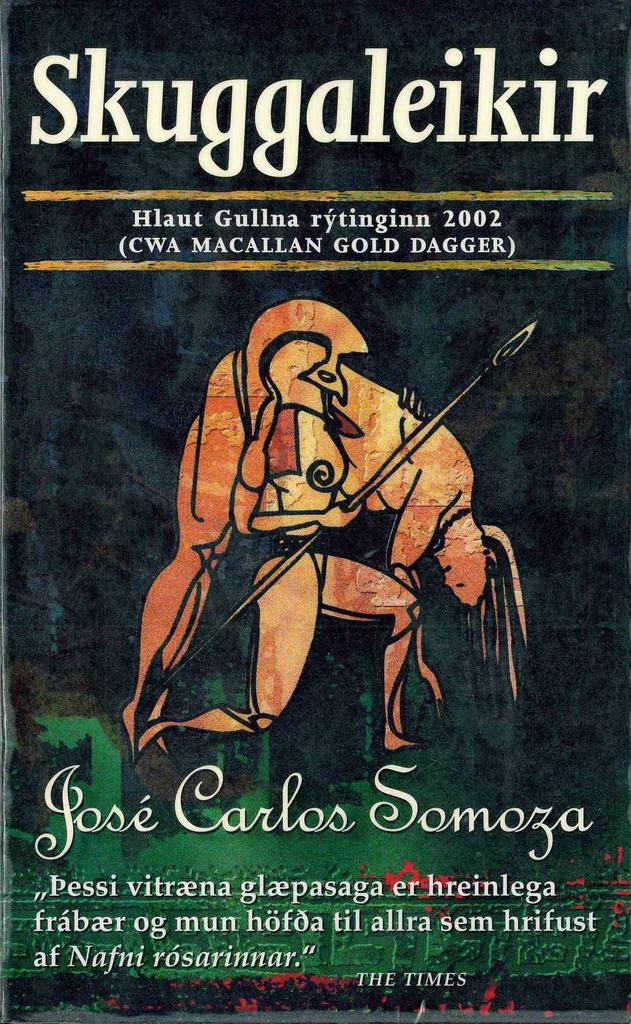
Skuggaleikir (The Athenian Murders)
Read more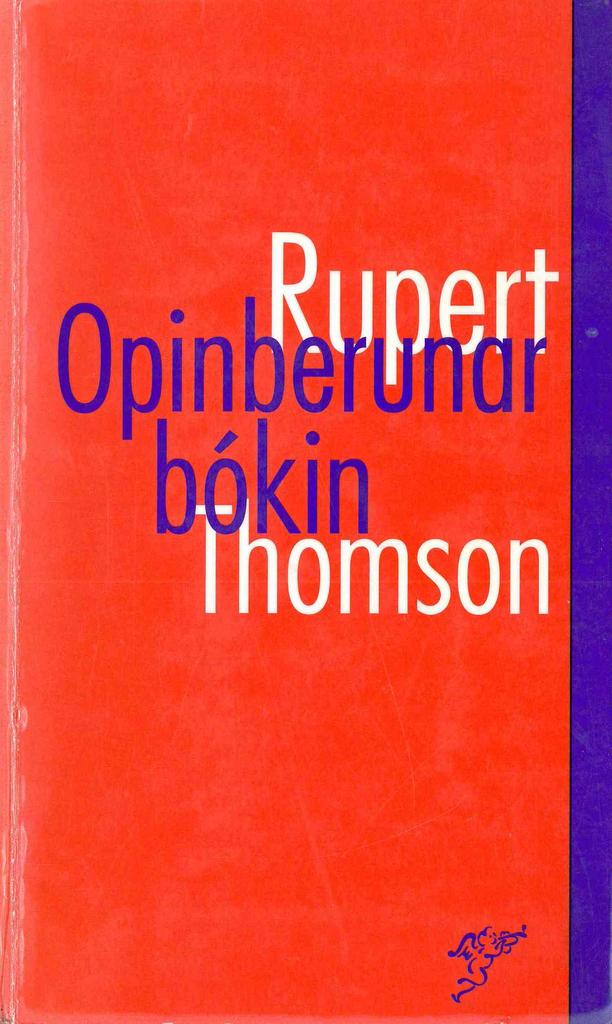
Opinberunarbókin (The Book of Revelation)
Read more
